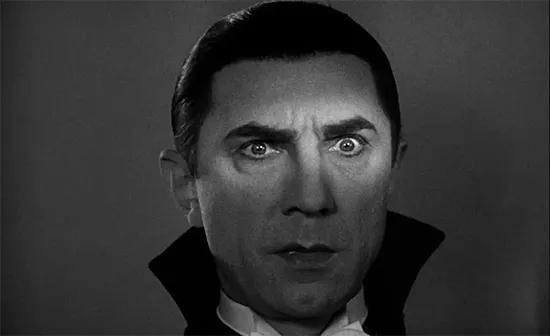When we think of Dracula, images of eerie castles, dark cloaks, and the immortal Count stalking his prey come to mind. Bram Stoker’s Dracula is one of the most iconic gothic novels in literary history, influencing decades of vampire lore in literature, film, and theater. Now, Gustavo Santaolalla, the celebrated Argentine composer and two-time Oscar winner, is set to bring this timeless story to life through a Spanish-language opera adaptation.
This exciting new project reimagines Dracula not just as a horror tale, but as a full-scale operatic experience. Santaolalla, known for his evocative compositions for films such as Brokeback Mountain and The Motorcycle Diaries, has ventured into the world of opera, promising a haunting and immersive retelling of this gothic classic.
Gustavo Santaolalla: The Maestro Behind the Music
Gustavo Santaolalla has been a key figure in the world of Latin American music for decades. His ability to blend folk elements with modern soundscapes has earned him international acclaim, but his versatility as a composer is what truly sets him apart. Whether it’s crafting the emotional melodies of a film score or creating complex symphonic compositions, Santaolalla has a unique gift for storytelling through music.
The leap to opera feels like a natural progression for an artist with such a dynamic portfolio. In taking on Dracula, Santaolalla fuses his signature blend of Latin American influences with the dark, atmospheric tone required to bring the famous vampire’s tale to life.
Why Dracula?
Bram Stoker’s Dracula has been adapted across almost every medium—film, theater, television, and even comic books—but transforming it into an opera brings a fresh and thrilling challenge. The opera format allows for heightened emotion, dramatic tension, and vivid storytelling, all perfectly suited to Dracula‘s themes of seduction, fear, and power.
What makes Santaolalla’s Dracula opera particularly exciting is the decision to present it in Spanish. A Spanish-language adaptation adds a unique cultural layer to the gothic tale, opening it up to new audiences while maintaining the core essence of the original. The dark romance and psychological intensity of Dracula resonate universally, but hearing it unfold in a language with such rich musicality and passion could deepen the experience for listeners.
The Setting and Visuals: Enhancing the Gothic Atmosphere
Operas rely heavily on their ability to create a world through not just music, but through visuals, sets, and costumes that transport the audience into another era. For Santaolalla’s Dracula, the gothic setting of 19th-century Eastern Europe is integral to the atmosphere. Audiences can expect eerie castles, moonlit nights, and the shadowy presence of the vampire count to fill the stage.
The combination of Spanish operatic vocals with dark, atmospheric staging will likely draw on the tradition of horror in opera. Operas like The Turn of the Screw or Der Freischütz have used music to evoke suspense and terror—Santaolalla’s Dracula aims to do the same, but with a modern Latin twist.
Blending Cultures: A Unique Take on a Classic Story
One of the most compelling aspects of Santaolalla’s opera is the fusion of cultures. By presenting Dracula through a Latin American lens, Santaolalla opens up space for reinterpreting the characters and themes. Could Dracula’s dark, seductive power have different meanings when filtered through Latin American cultural narratives of mysticism, spirituality, and the supernatural? The combination of gothic European horror with Latin American sensibilities promises to be intriguing.
This adaptation also serves as a bridge between two cultural worlds, inviting Spanish-speaking audiences to engage with a tale that has traditionally been told through Western European perspectives. It’s a rare and bold move to bring such a deeply ingrained classic into a new language and cultural context.
The Anticipation: What to Expect from Santaolalla’s Dracula
Gustavo Santaolalla’s opera will likely feature the composer’s signature style—evocative melodies with complex layering, mixing classical elements with modern influences. Fans of his previous work, particularly in film scoring, know that his music is highly emotional, often exploring themes of loss, love, and survival. These are all central to the Dracula narrative, making Santaolalla the perfect composer to tackle the opera.
Audiences should expect an intense, immersive experience, combining music, visuals, and gothic storytelling in a way that hasn’t been done before. The Spanish language will add a new dimension to the iconic tale, heightening the passion and dramatic tension.
Conclusion: A Bold New Chapter in Dracula’s Legacy
Gustavo Santaolalla’s Spanish-language Dracula opera is poised to bring a fresh and culturally rich interpretation to one of literature’s most iconic stories. By merging gothic horror with Latin musical traditions, Santaolalla is creating something that feels both familiar and groundbreaking. Fans of opera, Latin music, and gothic stories alike will eagerly await the release of this ambitious project.
Santaolalla’s Dracula is not just a retelling of a classic; it’s a reimagining that promises to breathe new life into the legend, proving once again that some stories, no matter how old, can always find new ways to thrill us.
